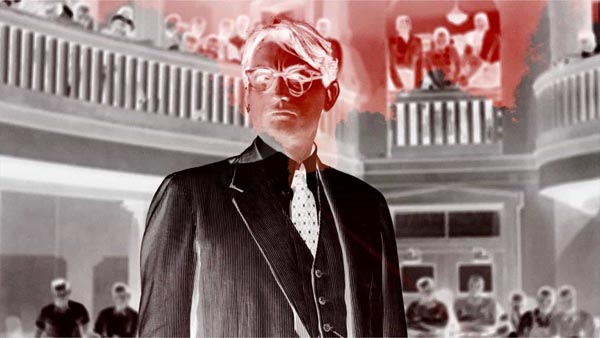Though not a horror film per se, several ghosts are disturbed over the course of this highly personal documentary, which doubles as an intense meditation on race in the Deep South. It centers on the filmmaker’s relationship with his family and a terrible act of racially charged violence that is a part of its legacy: his white great-grandfather S.E. Branch shot to death an African American man named Bill Spann in 1946 rural Alabama. Branch was charged with homicide, but found not guilty, and now filmmaker Travis Wilkerson wants to know all of the circumstances surrounding the incident—even if the quest leads him down some dark and ominous roads.
Most of the film takes place in Dothan, the city where the shooting occurred at a general store called Branch’s Place. Wilkerson searches for clues like a detective: he talks to neighbors and lifelong residents. This leads to his initial discovery of the racial tensions still existing in this community, even decades after the socially progressive movements that first emerged in the Deep South. As a harbinger of things to come, Wilkerson is told about a local white woman who says she knows that Branch murdered Spann in cold blood, but she will never say it on camera.
Wilkerson does not have much better luck with members of his own family, as his mother and an aunt were quite young when the shooting happened. The act of being reunited with kin, however, coincides with a gradual darkening of the film’s tone, and the director foreshadows trouble to come by repeatedly cutting to images, darkened with color filters, of trees blowing in the wind. He compares this inquiry into his great-grandfather to a conjuring, and indeed, not too long afterward we are introduced to Wilkerson’s other aunt, who is an unrepentant white supremacist. Despite never being seen in the flesh, she casts as wide a shadow.
Along with being a detective story, Did You Wonder Who Fired the Gun? is a fascinating if disheartening look at the recent history of Dothan and adjacent areas that, despite their ties to the civil rights movement, are places in which African Americans have been rendered largely invisible. At a certain point, the director decides to go looking for Spann’s final resting place, but the clerk at the local library has no information on him; only an African-American, who overhears the conversation, knows how to help him. The pattern of black history only being known to blacks repeats itself: when Wilkerson goes to visit the nearby home of Rosa Parks, none of the whites he talks to has any idea where it is. In another scene, a significant collection of artifacts from the civil rights era are kept in a modest, private home where they go largely unappreciated.
While the film may sound depressing based on the subject matter, it’s actually quite rousing at times, and one reason is the use of Janelle Monae’s track “Hell You Talmbout,” which demands acknowledgement of black lives cut down under questionable circumstances. The bursts of song are accompanied by title cards of the lyrics, a means to invite audiences to sing along karaoke-style. The director’s own narrative voice, dripping with contempt for his great-grandfather, his white supremacist aunt, and the racist politics he sees at work in Dothan, also carries the film.
But at the same time, he is genuinely fascinated by Branch, or at least how his great-grandfather seemingly benefited psychologically from the murder of Spann. Early on, the director uses a split screen to show two sets of home movies featuring Branch, one taken before the shooting and the other afterward. In the latter, the man’s body language is noticeably more cocksure. On the whole, Wilkerson manages to assemble a surprisingly convincing character study, based solely on found footage and family memories. Much of the film’s outrage stems from Branch turning out to be a deeply flawed and problematic person, who, nevertheless, has a discernible legacy in Dothan while Spann does not.
Through his actions, Wilkerson emphasizes the importance of trying to make amends, though he doesn’t dodge the fact that in today’s highly polarized world, attempting to do so invites more trouble. Perhaps fittingly, he ends with a premonition of a storm brewing.

















Leave A Comment